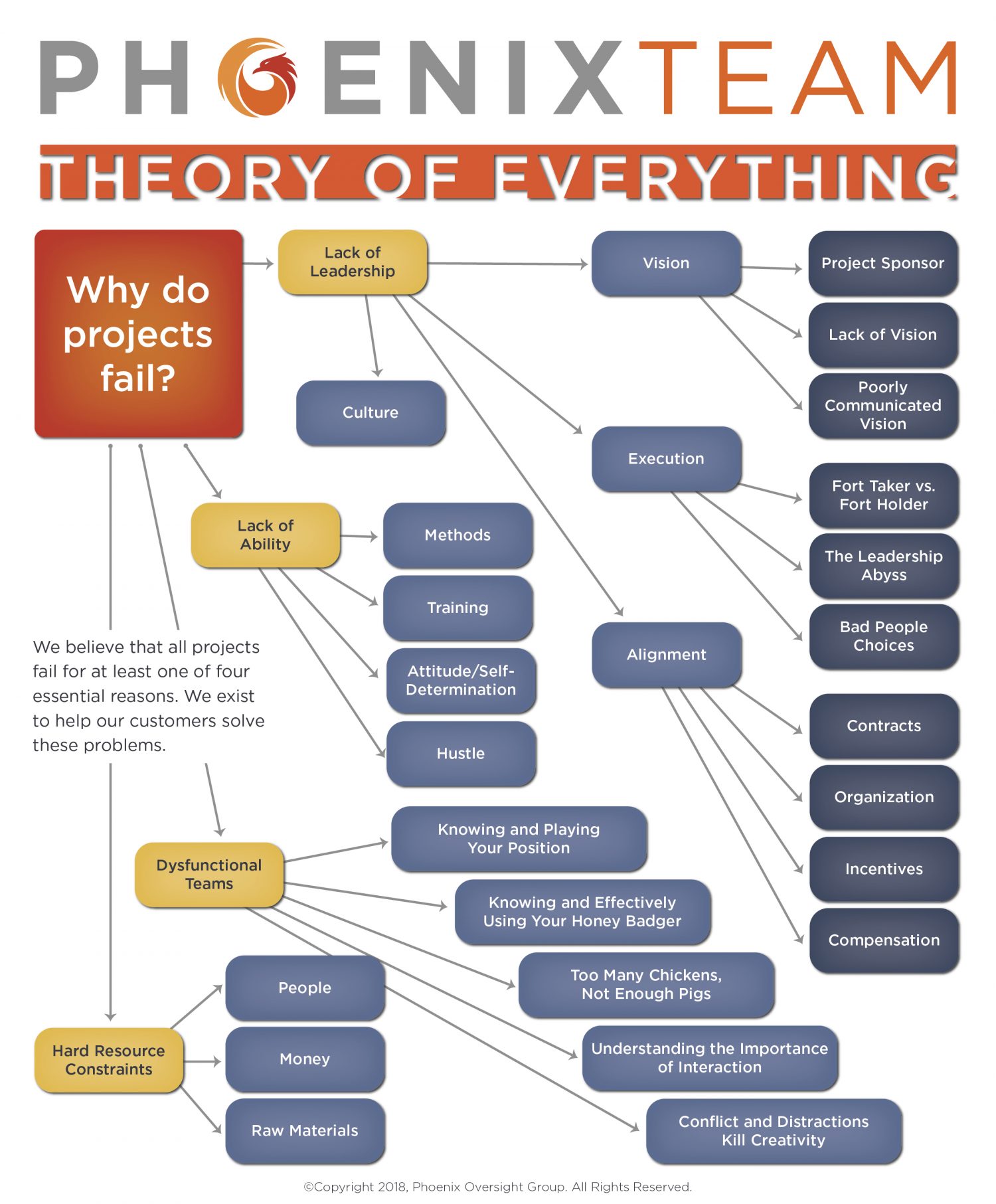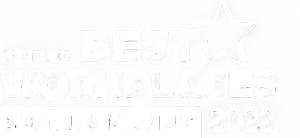The Phoenix Theory of Everything
At Phoenix, we have developed a Theory of Everything that helps describe why projects and organizations fail to meet their goals. We’ve seen the same culprits threaten to take down hundreds of mortgage technology projects repeatedly. Yet, it doesn’t have to be this way. Whether you are a technology provider, or a mortgage lender or servicer, at least one of three key gaps is most likely threatening your in-flight technology projects. The ability to close them can make the difference between failure and success on your next technology project.
Lack of Leadership
Often, implementations are plagued with a lack of leadership that ranges from the leadership abyss where there is no “one” leader, or a leader that does not engage until there is an escalation. When it comes to software implementations, we believe leadership fundamentally boils down to the ability to understand what needs to get done, and getting people motivated to get the job done well. A good leader not only motivates and teaches the team but also checks in and holds the team accountable for delivering quality results. Additionally, a good leader is decisive and makes the hard decisions while removing roadblocks along the way.
Here’s a little secret: your technology project will not go according to plan. You will need a good leader to help the team pivot to get to the finish line. The project team will need to iterate. We believe leaders come in two varieties: Fort Takers and Fort Holders. A Fort Taker will help the team navigate and resolve the unknowns, ultimately implementing change, while the Fort Holder will maintain the status quo. On your software implementation, find a Fort Taker to lead the way, and enable them to do what they do best. You will not be disappointed.
Lack of Skills, Experience, and Ability
Working in the mortgage technology industry over the last 20 years, Phoenix has found a lack of investment in growing individuals to become mortgage technology specialists. There are those that know mortgage operations, and those that know software, but it is rare to find qualified people who both know the mortgage industry and understand what it takes to implement mortgage technology. Too often teams lack training, skills, or the experience required to implement mortgage technology solutions.
At Phoenix, we know time is of the essence. A mortgage technology implementation specialist is a critical role for project success, serving as a project expediter. These specialists need to be “Swiss army knives”, comfortable wearing multiple hats to get the job done. Couple that with experience and training, and you will have a team member that will get done what is needed to deliver results.
Dysfunctional Team Interactions
As Max Isaac and Anton McBurnie so eloquently depict in their book Close the Interaction Gap, imagine a world record hurdler competing against a world record sprinter: ”as soon as the hurdler goes over the first hurdle, you realize he has lost even though the race has barely begun”. Hurdles, aka roadblocks, will slow your team down.
Promoting the ability for people to work together efficiently to clear those hurdles is a major success factor that is often ignored by management. What we usually see is confusion of who is responsible for what, finger pointing, and “that is not my problem” mentality. It is critical to note that conflicts and distractions kill creativity and the ability to resolve issues and roadblocks.
At Phoenix, we believe that people are a project’s greatest asset. Having a team where individuals understand how their role and capabilities fit into the team allows the overall team to reach their maximum potential.
Take a step back and think about the mortgage software implementation you are managing right now. Do you have a Fort Taker leading the team? Do your team members lack skills and expertise in either mortgage operations or software implementation? Is your team interacting effectively to clear hurdles to project success? Clearing these gaps can make the difference between hitting your next go-live date and becoming the next “troubled project.”
This article was featured in The MReport, August 2018. Read it online here.

This article was featured in The MReport, August 2018.



















